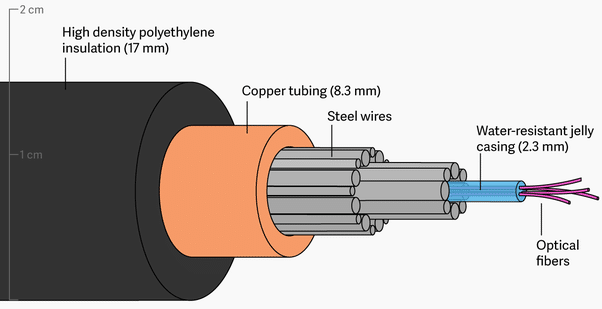Fiber Optic Cable
Fibre optic cable is an advanced type of network cable, offering significantly improved performance in terms of bandwidth and data carrying than traditional metal conductor versions.
Optical fibre cabling is used to transfer information via pulses of light, which pass along one or more - indeed, anything up to a couple of hundred in some cases - transparent glass or plastic pipes. Each of these strands is little wider than an average hair, and will normally be surrounded by a further layer of cladding (also in glass or plastic, but constructed at a different density to the main inner strand).
Wrapped around the cladded fibres, there’s also a sheath made up of a couple of layers of insulated casing. This usually comprises a protective wrapper, known as a buffer tube, followed by a final outer jacketing designed to protect the multi-stranded cable as a whole.
How It Works?
Firstly, there needs to be a source of light to send information ‘pulses’ along the strands of transparent glass or plastic tubing at the core of the cable. This is usually created either by a tiny laser or by an LED source, which receives an input signal coming from transmitter circuitry and converts it to a light pulse before bouncing it along the fibre cores.
Secondly, it’s key that the glass fibres themselves are surrounded by an additional glass or plastic cladding layer, which will have a different refractive index for light passing through it than the core strands. These refractive differences between the cladding and the glass fibres it surrounds are what allow the incoming light pulses to be bent at particular angles as it travels the length of the cable.
